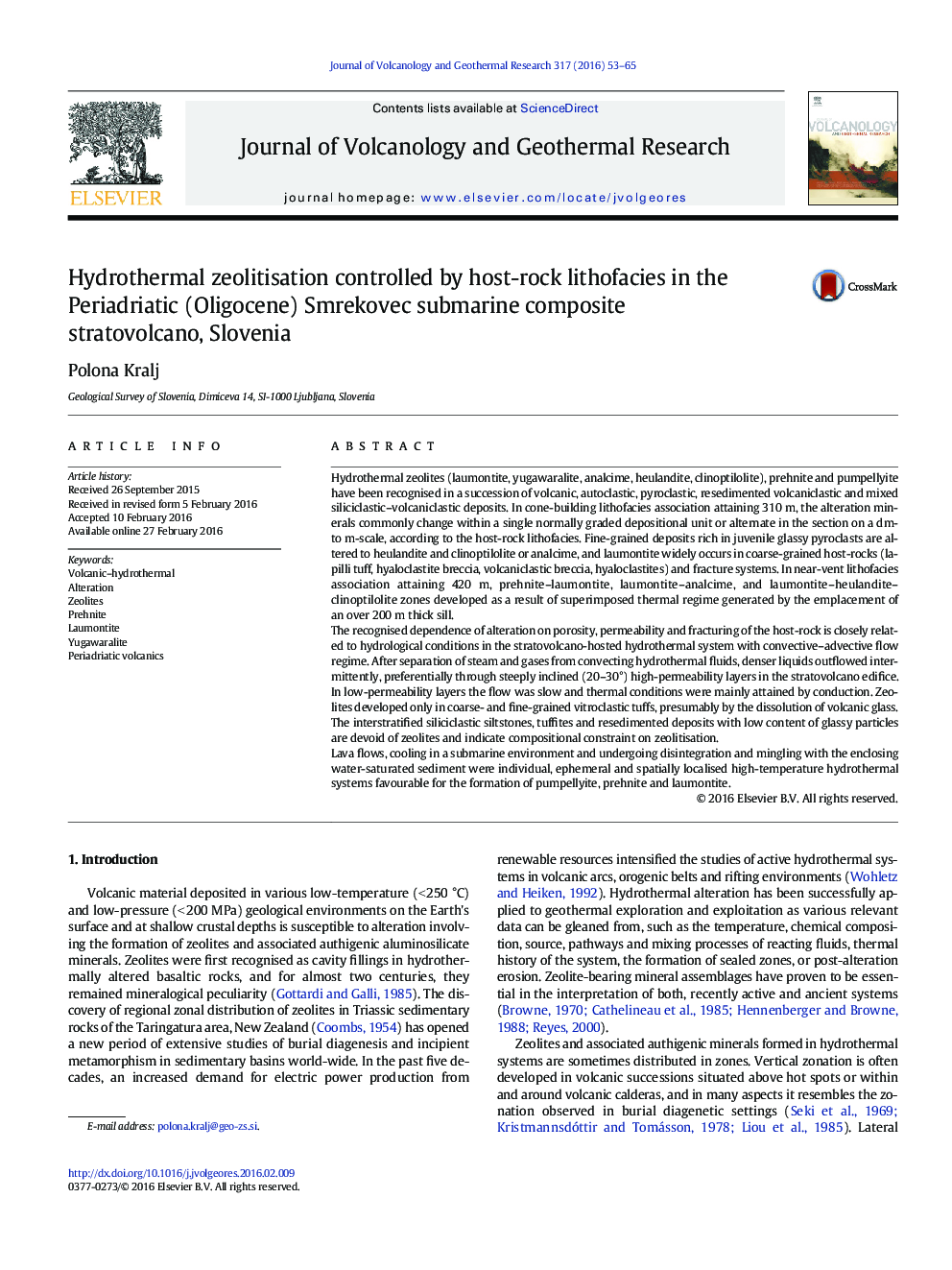| کد مقاله | کد نشریه | سال انتشار | مقاله انگلیسی | نسخه تمام متن |
|---|---|---|---|---|
| 4714100 | 1638305 | 2016 | 13 صفحه PDF | دانلود رایگان |

• Oligocene submarine stratovolcano hosted hydrothermal system
• Host-rock lithofacies and convective–advective flow regime controlled alteration.
• Laumontite and prehnite are common in coarse-grained deposits.
• Heulandite and clinoptilolite dominate in fine-grained vitoclastic tuffs.
• Peperites were altered by the inherited heat of disintegrating lava flow.
Hydrothermal zeolites (laumontite, yugawaralite, analcime, heulandite, clinoptilolite), prehnite and pumpellyite have been recognised in a succession of volcanic, autoclastic, pyroclastic, resedimented volcaniclastic and mixed siliciclastic–volcaniclastic deposits. In cone-building lithofacies association attaining 310 m, the alteration minerals commonly change within a single normally graded depositional unit or alternate in the section on a dm- to m-scale, according to the host-rock lithofacies. Fine-grained deposits rich in juvenile glassy pyroclasts are altered to heulandite and clinoptilolite or analcime, and laumontite widely occurs in coarse-grained host-rocks (lapilli tuff, hyaloclastite breccia, volcaniclastic breccia, hyaloclastites) and fracture systems. In near-vent lithofacies association attaining 420 m, prehnite–laumontite, laumontite–analcime, and laumontite–heulandite–clinoptilolite zones developed as a result of superimposed thermal regime generated by the emplacement of an over 200 m thick sill.The recognised dependence of alteration on porosity, permeability and fracturing of the host-rock is closely related to hydrological conditions in the stratovolcano-hosted hydrothermal system with convective–advective flow regime. After separation of steam and gases from convecting hydrothermal fluids, denser liquids outflowed intermittently, preferentially through steeply inclined (20–30°) high-permeability layers in the stratovolcano edifice. In low-permeability layers the flow was slow and thermal conditions were mainly attained by conduction. Zeolites developed only in coarse- and fine-grained vitroclastic tuffs, presumably by the dissolution of volcanic glass. The interstratified siliciclastic siltstones, tuffites and resedimented deposits with low content of glassy particles are devoid of zeolites and indicate compositional constraint on zeolitisation.Lava flows, cooling in a submarine environment and undergoing disintegration and mingling with the enclosing water-saturated sediment were individual, ephemeral and spatially localised high-temperature hydrothermal systems favourable for the formation of pumpellyite, prehnite and laumontite.
Figure optionsDownload as PowerPoint slide
Journal: Journal of Volcanology and Geothermal Research - Volume 317, 1 May 2016, Pages 53–65